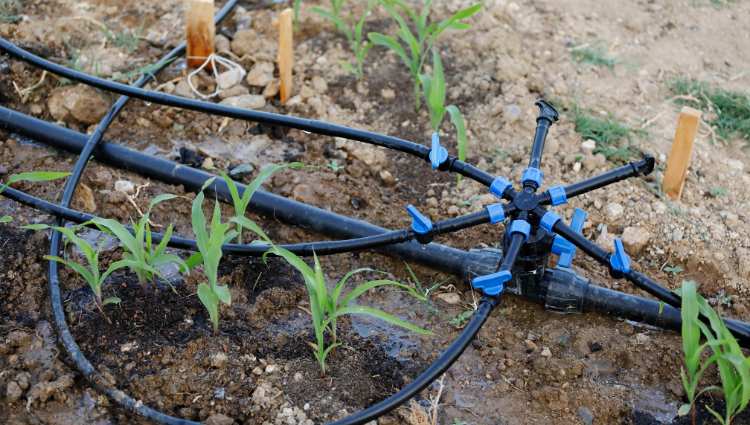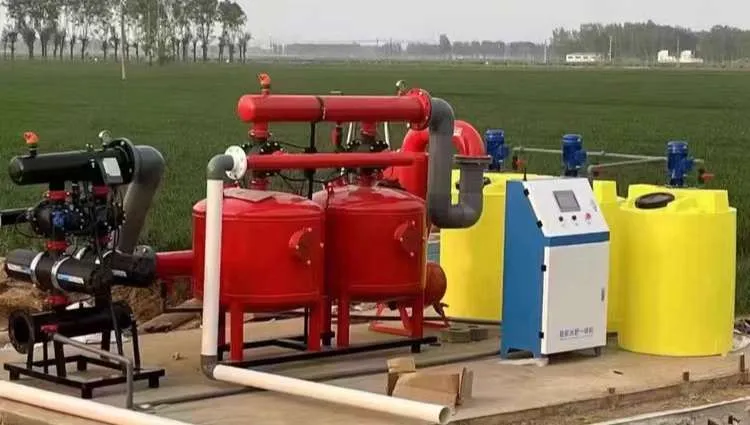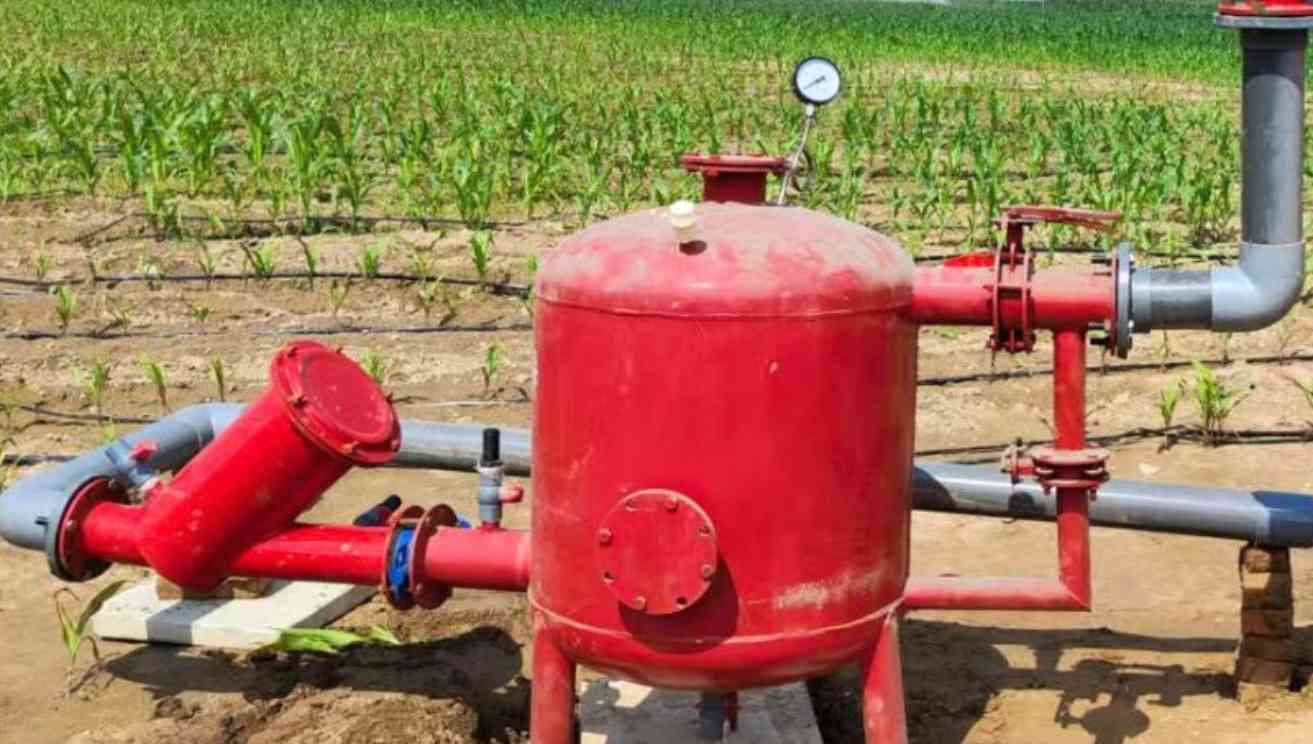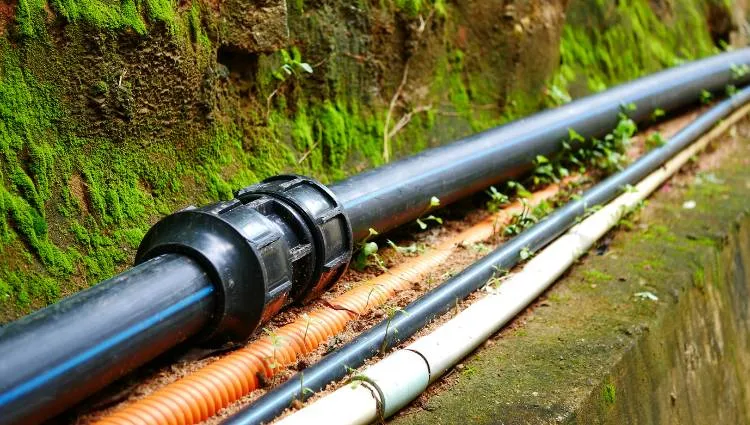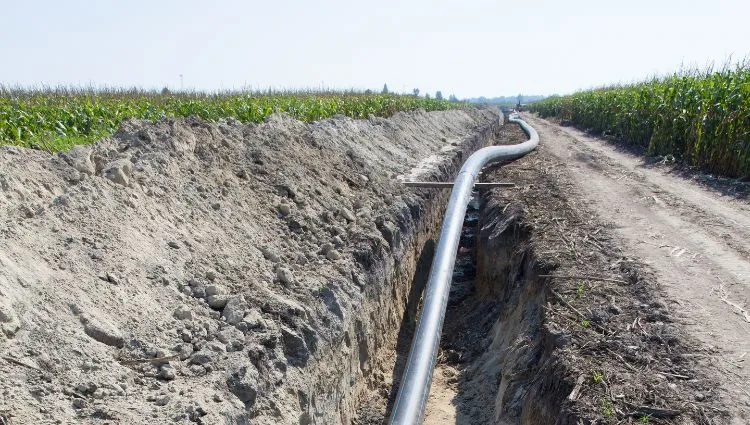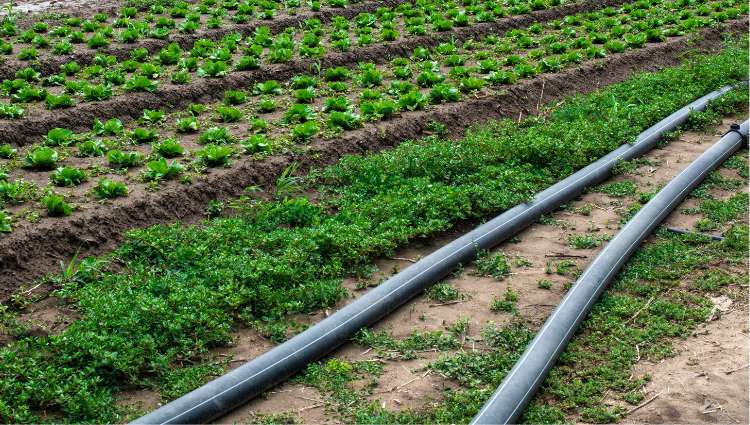Table of Contents
Water and fertilizer have always been two very important parts of agricultural cultivation. How to make reasonable use of water and fertilizer to help crops grow better has always been a topic of concern for farmers. Through long-term exploration, the technology of Water-Fertilizer Integration was developed. This technology was originally created and developed in Israel, and later countries like the United States, Australia, Mexico, South Africa, and others also began to apply it early on.
Nowadays, Water-Fertilizer Integration has been promoted in many countries and regions and has become an important and popular technology in modern agriculture. So, what exactly does this technology do? This post will explain it to you in detail.
What is Water-Fertilizer Integration?
Literally speaking, Water-Fertilizer Integration is a technology that synchronously manages and efficiently utilizes water and fertilizer. First, the fertilizer needs to be dissolved in water to form a water-fertilizer solution. Then the solution is delivered evenly, at fixed times and in fixed amounts, into the pipeline system. In the end, both water and nutrients are supplied to the crops and plants at the same time.
This process meets the crops’ needs for both water and nutrients. Moreover, we can scientifically and reasonably adjust the ratio of water and fertilizer in real time based on the crop growth conditions, achieving synchronization of water and fertilizer, scientific supply, and ultimately improving the efficiency of water and fertilizer use. It also avoids the destruction of soil structure, environmental pollution, and the waste of water and fertilizer resources, and finally improves both the yield and quality of the crops.
Components of a Water-Fertilizer Integration Irrigation System
Water-Fertilizer Integration is generally used together with drip irrigation or sprinkler irrigation systems, and eventually forms a Water-Fertilizer Integration irrigation system. It is roughly composed of a water source, front-end hub, intelligent control system, pipeline network, and terminal irrigation equipment. Below, I will explain the functions of these parts and what products are needed.
Water Source
A Water-Fertilizer Integration irrigation system must have a water source. Generally, rivers, lakes, reservoirs, ponds, wells, and canals can be used as water sources.
When choosing a water source, it is important to pay attention to water quality. Try to choose water sources with low sand content and fewer impurities, which can reduce the chances of clogging in the irrigation system to a certain extent. Of course, some impurities are not a big problem—the later filtration system will take care of them.
Front-End Hub
This part plays the role of pressurizing, filtering, and mixing water and fertilizer.
Once the water source is selected, we also need to bring water from the source into the irrigation system. In this process, a water pump can be used to pressurize the water, which is equivalent to providing power for the water to flow.
Once the water starts flowing, it must be filtered to remove impurities. This process is very important because if not filtered, the impurities in the water will enter the irrigation system, and over time, it will cause clogging of the equipment.
After the water is filtered, the fertilizer device comes into play. Common fertilizer devices include fertilizer tanks, Venturi injectors, etc. So how do we operate them? First, thoroughly mix the required fertilizer and water in the fertilizer tank—there must be no particles, otherwise the pipes will get clogged. Then turn on the water pump or fertilizer pump to deliver the water-fertilizer mix through the pipeline to the irrigation area. If conditions allow, some detection devices can also be installed to monitor the state of the water-fertilizer solution in order to adjust the ratio accordingly.
Intelligent Control System
An Internet of Things (IoT) system can also be introduced into the Water-Fertilizer Integration irrigation system to achieve intelligent control.
For example, sensors can be placed at important positions of the irrigation system to monitor soil nutrients, moisture, and crop growth in real time. This data will be sent back to the water-fertilizer machine. When the data is below the standard, the machine can remotely control the solenoid valves in the irrigation area via signals to automatically start fertigation. When the data reaches the standard, it can also remotely and automatically shut off the solenoid valves to stop irrigation.
These smart devices can be controlled not only through a central control platform but also via mobile phones, truly achieving efficient collection, transmission, filtering, and analysis of information. At the same time, they allow for precise control of the amount and cycle of irrigation and fertilization at the appropriate times, realizing precision fertilization and irrigation.
Pipeline Network
An irrigation system cannot do without a pipeline network. Pipelines are like highways—water and nutrients are delivered to crops through them.
The pipeline network includes the main water supply pipe, branch pipes, as well as connecting fittings and valves. The pipelines used in Water-Fertilizer Integration systems are mostly made of plastic materials such as PVC, PE, and PP, which have excellent durability, aging resistance, and corrosion resistance, and can improve the efficiency of water and nutrient delivery.
Terminal Irrigation Equipment
Terminal irrigation equipment is the final stop in the journey of water and fertilizer within the irrigation system. Related products include dripline, drip tape, drippers, etc., which play the role of drip irrigation. There are also sprinklers, rain guns, etc., which serve the function of sprinkler irrigation.
Water and fertilizer can be supplied to crops and plants through these devices.
Advantages of Water-Fertilizer Integration
Water-Fertilizer Integration technology is widely used in the field of agricultural irrigation, thanks to its many advantages. Below are some detailed advantages for your reference.
Saving Fertilizer and Water
Traditional irrigation methods mainly rely on flood irrigation, which uses a large amount of water. This disadvantage is especially magnified in water-scarce areas.
Water-Fertilizer Integration, when combined with drip and sprinkler systems, can precisely and effectively control the amount of fertilizer and water. Moreover, when problems are found, adjustments can be made in time. In the end, it reduces the loss and waste of water and fertilizer and improves the utilization rate.
Improving Labor Efficiency
Water-Fertilizer Integration can deliver water and fertilizer directly to the crop roots in one step through the irrigation system. In contrast, traditional irrigation requires a lot of manual work for fertilization and watering, which consumes a great deal of human resources.
In addition, the automation level of Water-Fertilizer Integration is very high. Sometimes only one person is needed to manage a large irrigation area, which saves a lot of time and labor. Ultimately, it greatly improves work efficiency and reduces labor costs.
Improving the Utilization Rate of Water and Nutrients
Water-Fertilizer Integration can precisely deliver fertilizer to the plant roots, improving the absorption efficiency of crops without having a negative impact on the soil.
In addition, the fertilizer follows the flow of water into the soil. Moist soil can also accelerate the dissolution of water and fertilizer and promote the absorption of nutrients. This process ultimately improves the utilization rate of water and fertilizer.
Improving the Soil Environment
Water-Fertilizer Integration technology can reduce the waste of water and fertilizer caused by improper fertilization. At the same time, it can improve the soil environment, improve soil structure, increase soil permeability and water retention, and enhance microbial activity. All these provide a more suitable environment for crop growth.
Reducing Chemical Fertilizer Pollution
Chemical fertilizer pollution has always been a major issue in agricultural cultivation. However, the application of Water-Fertilizer Integration technology can minimize the use of chemical fertilizers and effectively reduce pollution.
Improving Crop Yield and Quality
This is the ultimate goal of Water-Fertilizer Integration technology. It helps crops absorb nutrients and water more evenly, improves the taste of agricultural products, and enhances both the yield and quality of the crops.
Final Words
This article has explained in detail what Water-Fertilizer Integration is, along with its components and advantages. I hope it’s helpful to you!
Finally, please allow me to introduce our company. Rainfaun is an irrigation product manufacturer headquartered in China. We produce and export products such as drip irrigation products, sprinkler irrigation products and fertilization equipment, including drip irrigation valve, drip irrigation fittings, dripline, drip tape, dripper, arrow drip stake, sprinkler, micro sprinkler, rain gun, filters, venturi fertilizer injector, valves, lay flat hose, PVC pipe fittings, PP fittings, BSP thread fittings, and so on. You can find information about Rainfaun and our products on this website.
If you would like to cooperate with us, you can click here to fill out the form.
Author: Allen and Michael
Editor: Michael
Content Reviewer: Michael

